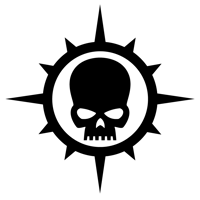Space Hulk: Deathwing, released in 2016, is a first-person shooter developed by Streum On Studio and published by Focus Home Interactive. Set in the grimdark universe of Warhammer 40,000, it promises a visceral experience that brings players face-to-face with the horrors of a Space Hulk. As a member of the Deathwing, the elite 1st Company of the Dark Angels Space Marine Chapter, players must cleanse the derelict spacecraft of the xenos threat. This review will delve into the game’s mechanics, atmosphere, and how well it integrates Warhammer 40k lore.
Gameplay and Mechanics
Space Hulk: Deathwing draws heavily from its tabletop predecessor, Space Hulk. The primary objective is simple: navigate through the labyrinthine corridors of the Space Hulk and eradicate the Genestealer infestation. Players take on the role of a Librarian, a powerful psyker within the ranks of the Deathwing, armed with both potent psychic abilities and traditional weaponry.
The gameplay is intense and demands a methodical approach. The claustrophobic environment and limited visibility create a palpable sense of tension. The corridors are narrow, encouraging tactical team play and strategic positioning. As a Librarian, players can wield weapons ranging from the iconic Storm Bolter and Power Fist to the more devastating Plasma Cannon and Assault Cannon. Psychic powers, such as Smite and Force Barrier, add another layer of depth, allowing for crowd control and defensive strategies.
One of the standout features is the command system. Players can issue orders to their AI-controlled squadmates, directing them to hold positions, advance, or use specific abilities. This system works well for the most part, although the AI can sometimes be frustratingly unresponsive or simplistic in its actions.

Atmosphere and Design
The game’s atmosphere is one of its strongest points. The developers have meticulously recreated the oppressive, gothic architecture of a Space Hulk. The levels are adorned with decaying machinery, ancient relics, and the remnants of countless battles. The sound design further enhances this atmosphere, with the clanking of metal, distant growls of Genestealers, and the thudding footsteps of Terminator armor echoing through the corridors.
Visually, Space Hulk: Deathwing is impressive. The attention to detail in the environments is remarkable, and the character models are faithful to the Warhammer 40k aesthetic. The Terminators are suitably bulky and imposing, while the Genestealers are agile and terrifying. However, the game’s performance can be inconsistent, with occasional frame rate drops and graphical glitches that detract from the overall experience.

Integration of Lore
Space Hulk: Deathwing is steeped in Warhammer 40k lore, and this is where it truly shines for fans of the universe. The story is straightforward but effective, centering around a Deathwing squad investigating a mysterious Space Hulk that has emerged from the Warp. The narrative unfolds through in-game dialogue, environmental storytelling, and collectible relics scattered throughout the levels.
The game does an excellent job of capturing the essence of the Deathwing. As a branch of the Dark Angels, the Deathwing is shrouded in secrecy and deeply committed to their hunt for the Fallen, the renegade Space Marines who betrayed the Emperor during the Horus Heresy. This theme of relentless pursuit and unwavering loyalty is evident in the game’s tone and character interactions.
Moreover, the inclusion of a Librarian as the player’s character allows for a deeper exploration of the psychic aspects of the 40k universe. The Librarian’s abilities are well-represented, and the psychic combat adds a unique flavor to the gameplay. The game also references significant events and figures from the broader Warhammer 40k lore, providing a rich backdrop for the action.

Challenges and Shortcomings
While Space Hulk: Deathwing excels in many areas, it is not without its flaws. The most glaring issue is the game’s repetitive nature. The core gameplay loop of moving from point A to point B, clearing rooms of Genestealers, and holding defensive positions can become monotonous over time. The lack of variety in objectives and enemy types exacerbates this issue.
The game also suffers from technical problems. As mentioned earlier, performance issues such as frame rate drops and glitches can be distracting. Additionally, the multiplayer component, which could have been a major selling point, was plagued with connectivity issues and lackluster matchmaking at launch. Although patches have addressed some of these problems, they have left a mark on the game’s reputation.

Final Thoughts
Space Hulk: Deathwing is a commendable attempt to bring the intense, close-quarters combat of the tabletop game to life in a first-person shooter format. It successfully captures the grimdark atmosphere and lore of the Warhammer 40,000 universe, providing an immersive experience for fans. The gameplay is challenging and rewarding, particularly for those who enjoy tactical shooters.
However, the game is held back by its repetitive nature and technical issues. While the atmosphere and lore integration are top-notch, the gameplay loop can become tiresome, and the performance problems can be frustrating. Despite these shortcomings, Space Hulk: Deathwing remains a worthwhile experience for Warhammer 40k enthusiasts and those looking for a unique and atmospheric shooter.
In conclusion, Space Hulk: Deathwing is a game that, while flawed, offers a deep dive into one of the most beloved settings in the Warhammer 40,000 universe. It is a testament to the enduring appeal of the franchise and a must-play for fans who want to don the sacred armor of the Deathwing and purge the xenos threat from the galaxy’s darkest corners.




